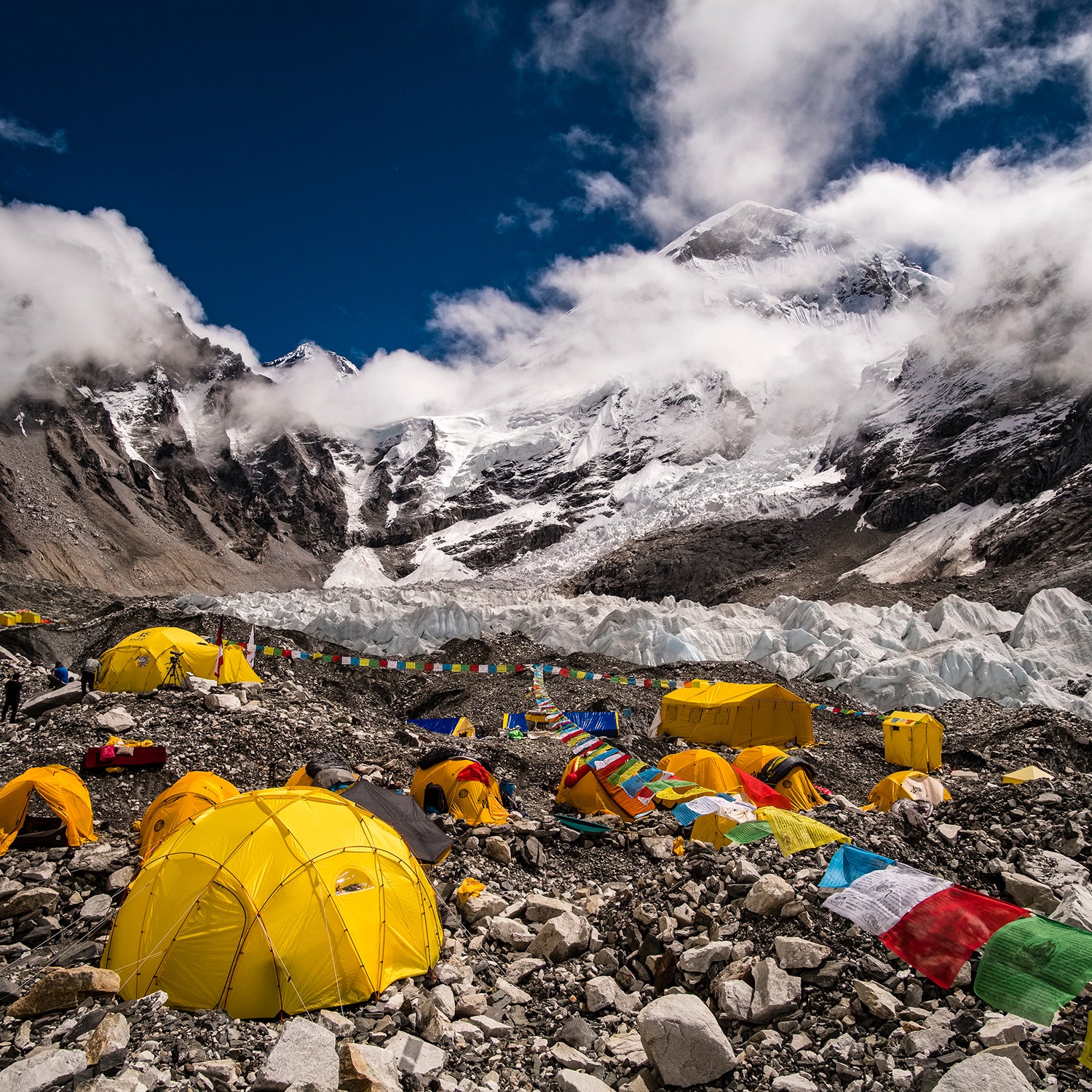Hopes for an Everest season unaffected by the pandemic dimmed last week╠¤when the first member of an expedition at Base Camp tested positive for COVID-19, according to a source at camp╠¤who asked to remain anonymous.
The infected patient was originally thought to be suffering from high-altitude pulmonary edema (HAPE)╠¤and was evacuated by helicopter to a hospital in Kathmandu, Nepal. Upon arrival, the person╠¤tested positive for╠¤COVID-19. The rest of their╠¤expedition team then began quarantining at Base Camp.
While only a single case of COVID-19 has been identified here so far, an outbreak would have disastrous consequences.╠¤тАЬWhen youтАЩre sitting at Everest Base Camp at 17,600 feet, your immune system gets compromised because of the lack of oxygen,тАЭ ╣·▓·│╘╣╧║┌┴╧ Everest correspondent Alan Arnette told us╠¤last spring, when the virus cut the season short before it even started.╠¤тАЬEven a small cut on your finger doesnтАЩt heal until you get back down to an oxygen-rich environment. I think the risks are really high, and people are taking a gamble if they climb.тАЭ
The virus threatens the summit aspirations of climbers, the economic security of Sherpas, and the health of both.╠¤
тАЬOf course we are worried,тАЭ says Dr. Sangeeta Poudel, a volunteer at the Himalayan Rescue Association, a nonprofit that works to reduce deaths from acute mountain sickness in the Nepalese╠¤Himalayas. If there was an╠¤outbreak at Base Camp, Poudel says, тАЬit would be an earthquake-like ▓є╛▒│┘│▄▓╣│┘╛▒┤╟▓╘.тАЭ
The high elevation of Base Camp is particularly worrisome, as the virus could╠¤be masked by, or mistaken for, symptoms commonly caused by extreme altitude.╠¤
тАЬWith HAPE and COVID-19, we have a diagnosis dilemma, because they share symptoms,тАЭ says Dr. Suraj Shrestha, another Himalayan Rescue Association volunteer. Ambiguous symptoms include cough, a loss of appetite, and shortness of breath,╠¤all commonly experienced at high elevation.╠¤
Doctors at Base Camp have already arranged seven emergency evacuations, including╠¤some╠¤for multiple cases of HAPE. But because they arenтАЩt able to test for COVID-19 at Base Camp, they donтАЩt always feel certain in their diagnoses.╠¤
As of now, the teams on the mountain╠¤are feeling cautious but unfazed by a single positive test result╠¤and are going forward as normal. While some initially expected a quieter climbing season this year, the government has╠¤issued 338 permits,╠¤almost as many as usual. Masks are worn sporadically╠¤at╠¤Base Camp, and social-distancing protocols vary widely among expedition companies, with a few╠¤imposing strict isolation and others more or less carrying on like a normal year.
тАЬThe camp is as big as 2019, there is no difference,тАЭ╠¤says Noel Hanna of Northern Ireland, who is at Base Camp for his third time. тАЬEverything seems to be the same.тАЭ
Most foreigners had to present a negative COVID╠¤test╠¤result╠¤upon arrival in Nepal. The government also requires a quarantine period and a second negative test after arrival, but these rules appear to be largely self-enforced. Many individuals and expedition companies seem to have followed the rules, albeit some more seriously than others. A fair share of the foreigners claim to╠¤have received a vaccination, allaying concerns to an extent, but most Sherpas,╠¤who travel╠¤down the mountain and to Kathmandu more frequently, have not.
Luckily, Nepal has seen╠¤a relatively low COVID╠¤infection rate since early January. In Kathmandu, many people wear masks, and life mostly goes╠¤on as usual. However, cases are starting to trend upward. Particularly worrisome is the skyrocketing number of cases in India, which shares an open border with Nepal.
Yet there is a fair amount of optimism for a successful climbing season. Doctors and expedition leaders hope that the single known case has been contained. And at the end of the day, for many summit╠¤hopefuls, the coronavirus is just one more danger on a dangerous mountain.╠¤
Says Hanna: тАЬThe way I look at COVID,╠¤if I get it, I get it. ItтАЩs just the gamble you take.тАЭ


